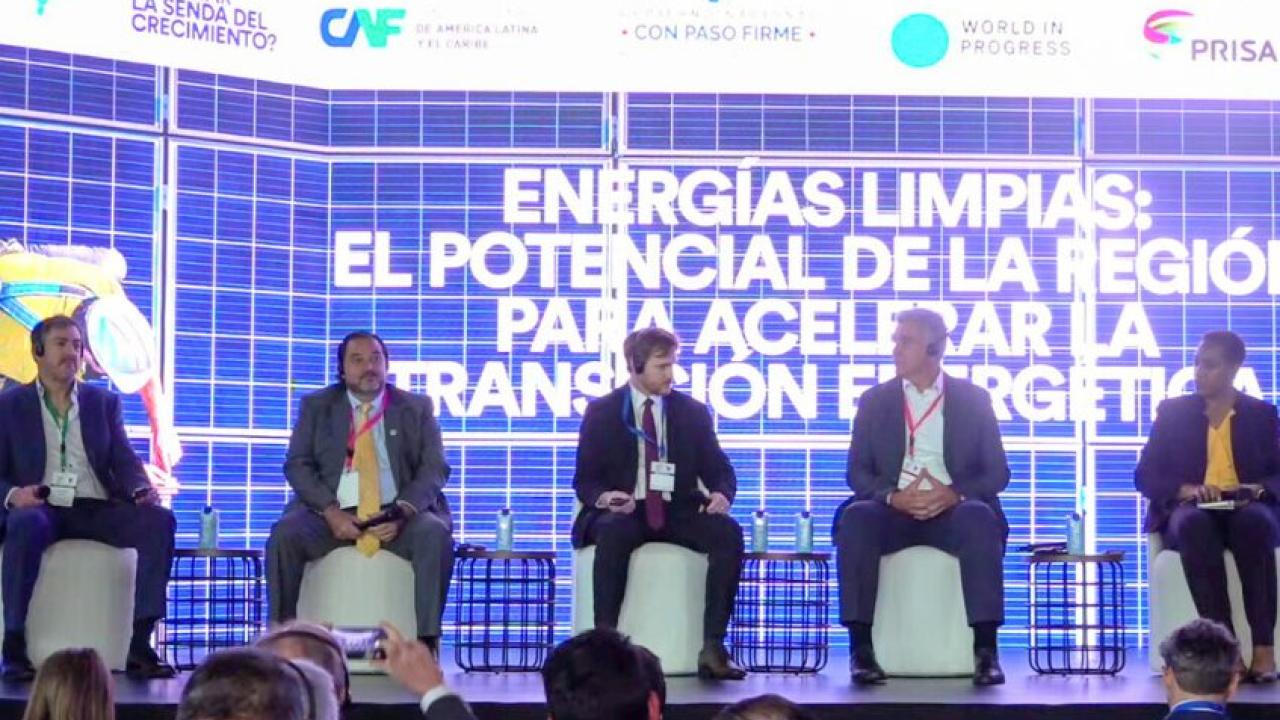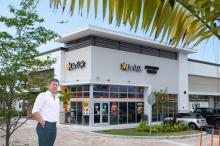
In several countries in the region, energy problems and the transition that must occur in this area are some of the issues that have gained relevance.
Energy problems and the transition that must take place in this area are one of the most talked about topics in the region today.
Andrés Rebolledo, secretary of the Latin American Energy Organization (OLADE, an intergovernmental organization with 27 member countries), was part of several spaces in which this issue was discussed at the International Economic Forum Latin America and the Caribbean 2025, organized by CAF, Development Bank of Latin America and the Caribbean. He comments on the situation and the potential that Ecuador and other countries have in this matter.
In Ecuador, 70% of power generation is hydroelectric, and the lack of rain caused blackouts. How should a country prepare for this situation?
The key is diversification. Planning is also a central element. These sectors are planned for decades because they are large investments with long returns in terms of invested resources. They are the central elements to be able to foresee scenarios, especially in a context of climate change that generates scarcity in something that is so important for Latin America, such as water. 40% of the generation in the region is water. But it is also true that 50% of these generations today are hydroelectric plants that are 30, 40 years old. So, maintenance and modernization efforts are required there as well.
What type of energy has the greatest potential for growth in the shortest time?
In 2024, solar energy grew by 30% in the region, and wind energy by 14%. And they continue to grow... There are important projections. Therefore, I think that a combination of this solar-wind energy, plus storage efforts to have energy when that source is not available during the day, are vectors that will be very present, but biofuels also seem to me to be a good option. In other areas of decarbonization, more in demand, I think that there one could also expect developments in Latin America. And in the medium to long term, probably, synthetic fuels from green hydrogen will also play some role. It seems to me that Latin America and the world will have a rather multi-energy scenario in the coming years, where there will be different solutions contributing to decarbonization.
Also offshore wind power, windmills in the sea, as there are many in Scandinavian countries or in Europe. And that is going to grow because there are already tenders in Brazil, Colombia and other countries that are considering it.
How applicable is geothermal energy in countries like Ecuador?
Geothermal energy has barriers to entry due to the high cost of initial investment. And, in addition, it often happens in Latin America that it is located in places far from consumption centers. So, it also requires significant investments in transmission. I believe that we have great potential; we have the Andes mountain range. But, of course, it has to compete with other technologies.
How is the energy transition progressing in the region?
Latin America and the Caribbean is the greenest region in the world in terms of its primary matrix, but also its electrical matrix. By 2024, 70% of all electricity generated in Latin America was from renewable sources. In the world, that is something like 40%. So, it is a significant gap. Of that 70%, 40% is hydroelectric; the rest is other types of sources: solar, wind, biofuel, geothermal, etc. Even nuclear, which is not much, but it also has a presence. And, therefore, we are a region that has a vocation for transformation and renewability, and we contribute to the transformation of the world because, in addition, we have critical minerals and a lot of clean energy to trade.
How interconnected are we in energy issues between countries?
There is progress in Latin America in terms of electrical interconnection. In particular, I would say, there are subregions that are connected, some of which have advanced more than others. Central America is a leader in this regard. For 30 years, it has had an interconnection project in which six countries trade energy daily. The Andean countries are building a more subregional project, and I believe that this will continue to develop significantly in the coming years. And South America is taking the first steps. What we do have in Latin America are many bilateral connections between countries that have been very important, including the Ecuador-Colombia situation, also in Mexico-Guatemala, in Brazil-Argentina, etc. I believe that there is an interesting factor in terms of how integration has come to resolve energy security issues in recent years. And on the other hand, there is also, and this will probably persist and develop more strongly, gas connectivity, particularly in South America and in the Southern Cone. And with Argentina's huge reserves, this will probably also continue to develop in the coming years.
Ecuador has gas potential in the Gulf of Guayaquil: what benefits would come from properly exploiting it?
Natural gas is an energy resource that will accompany the transition for several decades. Latin America is very rich in this area. We represent something like 4% or 5% of the world's total natural gas production. And, therefore, it is a resource that contributes to energy security, it contributes to economic growth. I think that countries today put it within their priorities as a sector to develop in that sense. When you have a lot of variable electric energy, you require base energy that gives you security, and gas is a support in that sense. Just as in some cases it is collaborating in productive and industrial sectors. And it also has a lower emission factor than other hydrocarbons. In some ways, it is also an additional step towards decarbonization.
Can nuclear energy be developed in Latin America?
Already, 2% of energy generation in the region is nuclear. There are three countries that have this: Argentina, Mexico and Brazil. And there is a lot of interest in incorporating it into the matrix.
Today, new technology allows for rather small reactors, up to 300 megawatts, modular, that can grow, and are safer. It seems that this is the modality, which takes up much less space, that will be the one that will be established. There are many countries that already have it. Of course, those that do not have it need to develop regulations and training. But El Salvador has already proposed that in 2030 it could have its first reactor. And several other countries have outlined this as an interest. At OLADE, the ministers at the last meeting asked us to create a group of nuclear energy technicians. We did an activity with the Nuclear Energy Agency last year to be able to support the countries, to start a dialogue in that sense.
How important is the relationship between the public and private sectors in the transition?
It is key, in the energy sector that is key. It is a sector where regulation is essential, generating the appropriate incentives for investment, but also for security, for certification in many cases. And in that context, public-private dialogue is a central issue.
What role do multilaterals play in all this?
Well, CAF is a key organization, as are other development banks, to be able to leverage these resources, to finance. Our numbers say that between now and 2050, to reach a net zero scenario in the region in terms of renewable energies, 400 billion dollars are required. Therefore, it is a major effort that must involve everyone. Development banks play a leading role.









